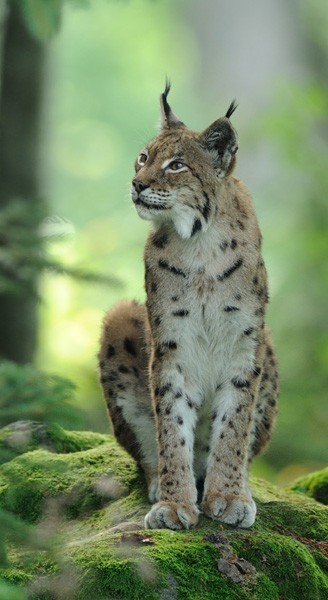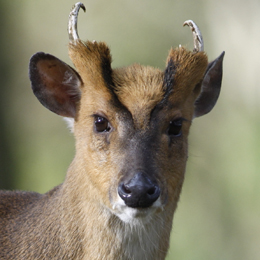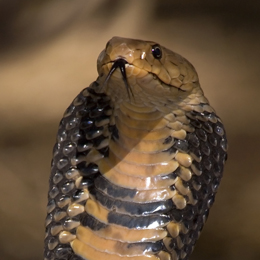Introduction and Physical Characteristics
Due to the wide range of distribution and the existence of six subspecies, the Eurasian Lynx is known by several different names such as the Northern Lynx, European Lynx, Siberian Lynx, Mongolian Lynx, Himalayan Lynx and Russian Lynx. It is the largest species of lynx with males weighing between 18 to 30 kg and females 10 to 20 kg on average. However, in Siberia the Eurasian Lynx grow relatively larger in size; adult males can be over 38 to 40 kg in weight.
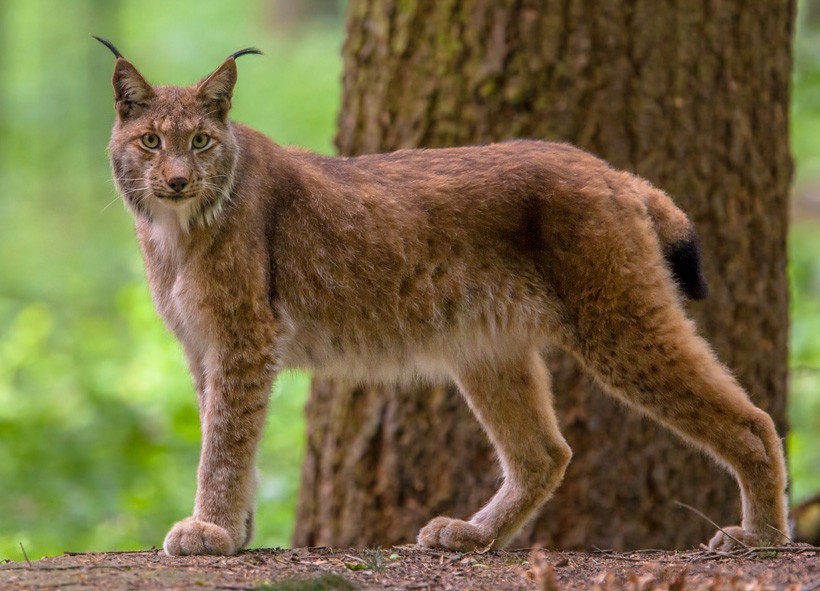
Eurasian Lynx, medium-sized cat native to European and Siberian forests
?
Image credits: Rudmer Zwerver/Shutterstock
Eurasian Lynxes are well-adapted for their chilling habitat. Compared to other lynx species, the Eurasian Lynxes have longer legs, the paws are webbed and they also have fur underneath their paws, allowing a better control on snowy terrain. On average, an adult Eurasian Lynx has a height of 65 to 75 cm at the shoulder with a length of anywhere between 80 and 130 cm.
The underside of its body is white in color at all times. However, the outer part of the coat significantly changes according to the changing seasons. The summer coat is bright reddish-brown in color with short hairs while during winter this short hair is replaced by a silkier thicker fur, which is grayish-brown in color. Eurasian Lynxes have irregularly shaped dark spots on their back and legs, while the ears show black and white patches. Like other lynx species, the Eurasian Lynx also has a short black-tipped tail and tufts of black hair at the tip of its ears.
The Eurasian Lynx has well-developed senses of vision, smell and hearing. They use their sense of smell to detect scents left by other lynxes and predators in its range while they depend on their senses of vision and hearing to locate potential prey. Its eyes provide good overall day-and-night vision but when a potential prey can’t be seen, they rely on their sense of hearing.
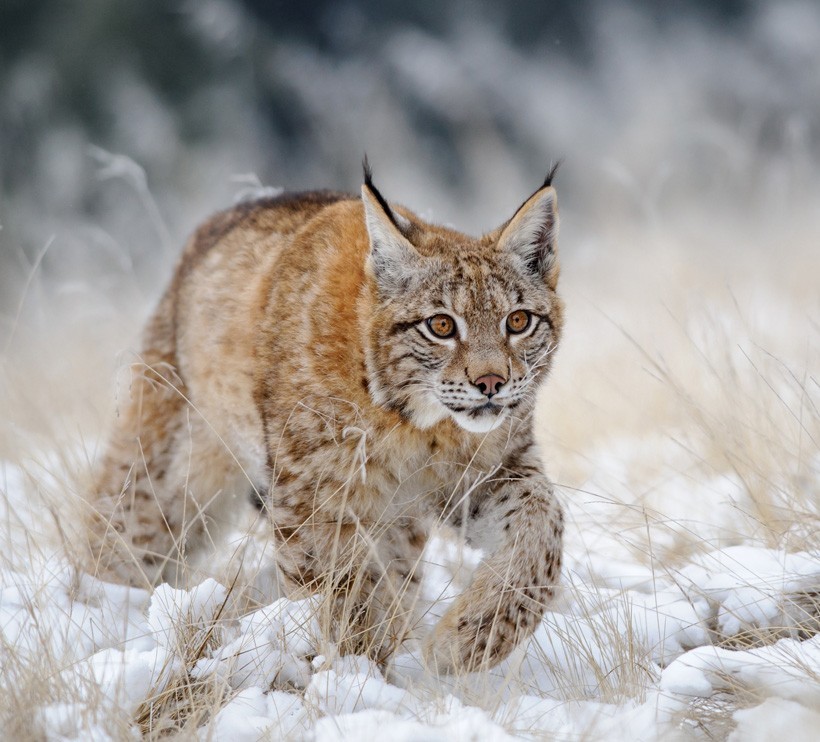
Eurasian Lynx in a cold winter
?
Image credits: Stanislav Duben/Shutterstock
Subspecies
Based on different regions of their existence, six subspecies of the Eurasian Lynx have been recognized so far. These are:- Northern Lynx: The Northern Lynx, scientifically known as L. l. lynx is the nominate subspecies that occurs in Scandinavia, Western Siberia and Eastern Europe.
- Siberian Lynx: The Siberian Lynx or the L. l. wrangeli is primarily found in Eastern Siberia, hence it is also called the East Siberian Lynx. It is also the largest of all subspecies of Eurasian Lynx.
- Balkan Lynx: The scientific name of the Balkan Lynx is L. l balcanicus. As the name suggests, this subspecies occurs only in the Balkan Peninsula in South-eastern Europe.
- Caucasian Lynx: The Caucasian Lynx is commonly known as the Eastern Lynx and scientifically as the L. l. dinniki. This subspecies occurs in the Caucasus Mountains in the Middle East.
- Carpathian Lynx: The Carpathian Lynx or L. l. carpathicus is the subspecies of Eurasian Lynx that inhabits the Carpathian Mountains in Central Europe.
- Turkestan Lynx: The Turkestan Lynx is one of the most widespread subspecies of Eurasian Lynx. It is found in large numbers in Central and Southern Asia. Scientifically known as L. l. isabellinus, the Turkestan Lynx has other common names such as Himalayan Lynx, Central Asian Lynx and Tibetan Lynx.
Apart from size variations and slight color differences, there are no visible factors to differentiate between the subspecies. Wildlife experts identify the subspecies on the basis of their location of existence. Several researchers have proposed the existence of three more subspecies, namely, Altai Lynx, Baikal Lynx, and Amur Lynx. However, these subspecies are not yet recognized due to the lack of information. Studies are still ongoing and hence, the number of subspecies may change in future.
Habitat, Diet and Behavior
The Eurasian Lynx is a solitary, medium-sized predator. They occur primarily in mountainous forests, coniferous forests and temperate grasslands as these habitats provide plenty of resources and hiding spots that are essential for its survival. They make a wide range of vocalizations in order to communicate with other lynxes in the range. These vocalizations can be heard only during the breeding season when males and females attempt to locate each other. Meows, chuffs and growls are some of the most frequently used calls.
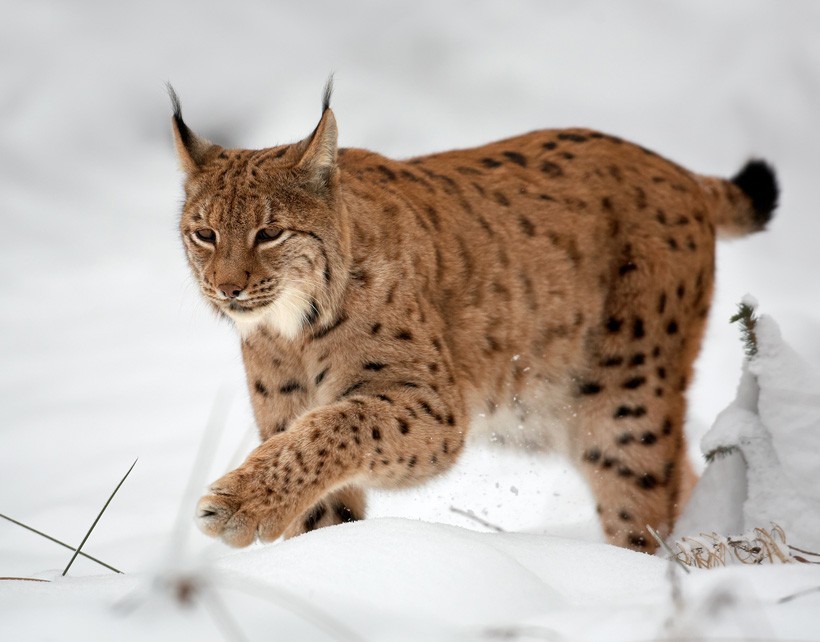
Close up Eurasian Lynx (Lynx lynx) in winter on snowy ground
?
Image credits: Martin Mecnarowski/Shutterstock
These opportunistic predators can be active at any time of the day but most activity is observed during the night when their potential prey is also active. The Eurasian Lynx’ diet mainly consists of small-sized animals like squirrels, hares, rabbits, mice and other rodents. During winter, when the potential prey is scarcely available, the Eurasian Lynx shifts to larger prey species like roe deer, red deer, wild boar, chamois and other ungulates.
The furred paws and its super senses allow them to get very close to its potential prey before it finally pounces to deliver a fatal bite to the throat. In open terrain, the Eurasian Lynx can chase down its prey at speeds of up to 65 km/hr, but its stout build only supports short bursts of strength and speed. Quite intelligently, the Eurasian Lynx depends mainly on its sense of hearing when hunting for small-sized animals like rodents. It can detect tiny movements under the snow and calculate the precise location of its potential prey without seeing it. Eurasian Lynxes are also known to wait at openings of burrows to catch the unsuspecting rodent as soon as it comes out.
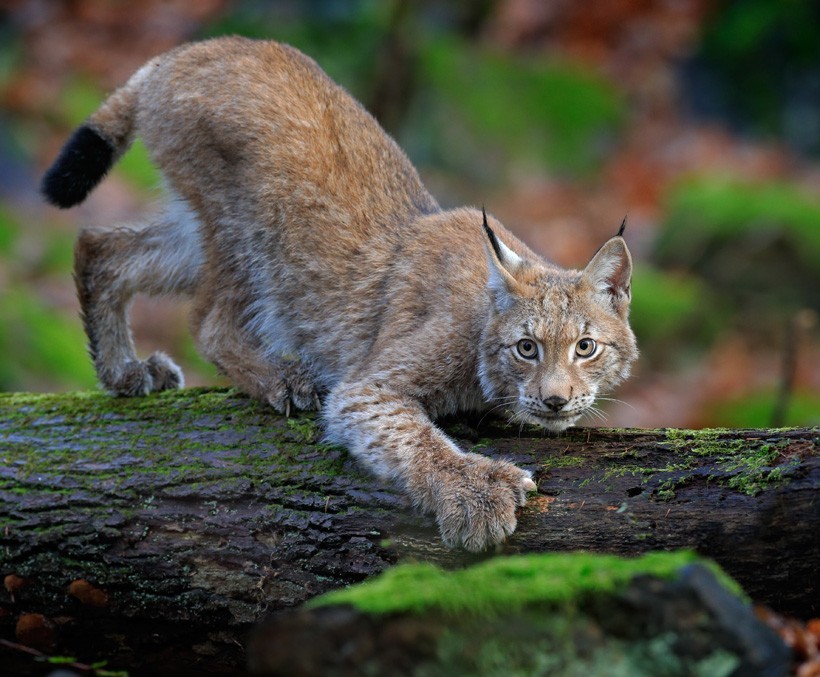
Creeping Eurasian Lynx in green forest
?
Image credits: Ondrej Prosicky/Shutterstock
Being a successful predator, the mammal attracts a lot of attention in the unforgiving Eurasian Lynx habitat. Other predators like foxes, golden eagles, eagle owls and wolverines frequently and successfully steal Eurasian Lynx kills. For an Eurasian Lynx, losing a kill is always better than losing its life. For the same reason, it keeps a safe distance from larger predators like wolves, leopards, snow leopards and tigers. Normally in nature, larger predators take out smaller predators in order to reduce the competition for food. Leopards, tigers and snow leopards do kill lynxes, but the most dangerous of them all are the wolves. Wolves occur in large packs. Being largely outnumbered and outgunned against the wolves, the Eurasian Lynx has to retreat quickly by climbing a tree. Researchers have observed a decline in Eurasian Lynx populations in areas where wolves occur in large numbers.
Cunningly, the Eurasian Lynx actively avoids confrontation with other predators. When threatened by a relentless predator, it quickly retreats from a kill. However, the same Eurasian Lynx can attack quite viciously and fearlessly when it has something more to defend than just a carcass.
Reproduction and Lifecycle
Eurasian Lynxes mate between January and April and most of the kittens are born between April and June when the climate is quite mild. During the mating season, the female is receptive for up to four to seven days. She announces her receptiveness by scent marking her territory and giving loud mating calls. Males respond to mating calls with loud deep growling sounds.
Once the male and female locate each other, they spend the next few days together. They mate several times a day as long as the female is in estrus. A male Eurasian Lynx may mate with several females during the mating season while the female mates with only one male. After mating, the male leaves as the female engages in building a den or searching for a safe spot to give birth. The gestation period is 70 days, after which the female gives birth to a litter of 1 to 4 kittens.
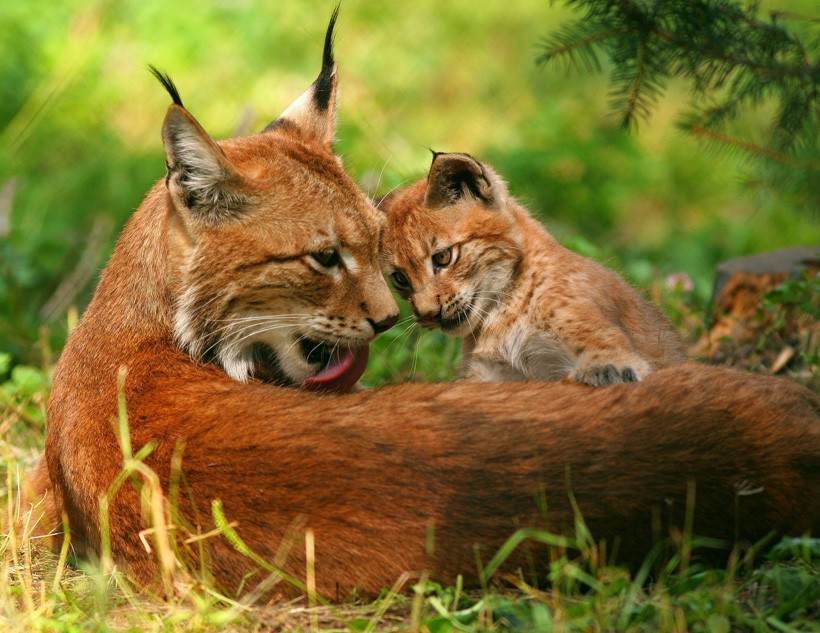
Eurasian Lynx, mother with cub
?
Image credits: Bildagentur Zoonar GmbH/Shutterstock
The newborn kittens are small and vulnerable, weighing only 300 to 400 grams at birth. They are completely dependent on the mother who has to continue hunting during this period. She leaves the den from time to time in order to hunt for food. During this period, kittens are often killed by opportunistic predators like foxes, wolves, eagles and wolverines. The female aggressively protects her kittens until they are old enough to follow her during hunting expeditions.
The kittens grow fast and after 10 to 12 days they open their eyes. When 2 months old, they start moving out of the den. During this period, they are not only following their mother on hunting expeditions but also begin to consume small amounts of solid food. After two more months, the kittens are fully weaned.
Normally they stay with the mother until the next breeding season. The kittens start independent life when they are approximately 10 months and after 24 - 30 months they become sexually mature adults. On average the Eurasian Lynx has a lifespan of up to 17 years in the wild, but in captivity individuals tend to survive for up to 25 years.
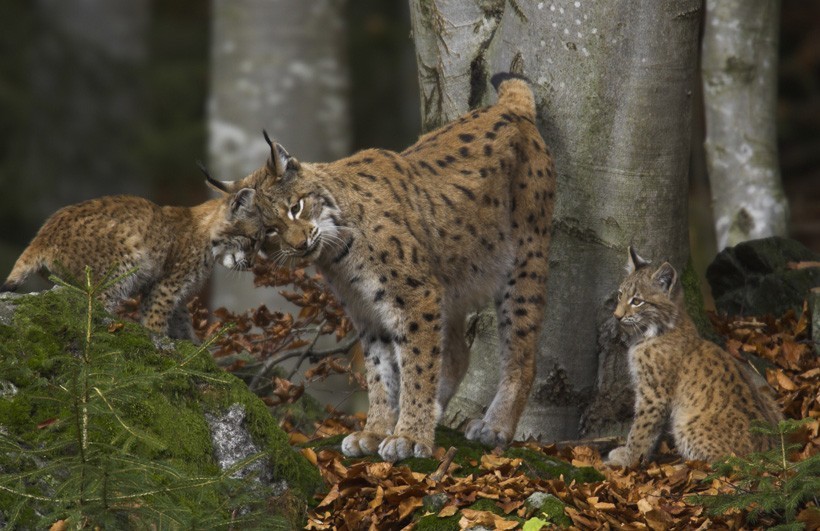
?
Image credits: Bildagentur Zoonar GmbH/Shutterstock
Both in captivity and in the wild, lynxes are known to form hybrids with other cat species. The most popular are the crosses between bobcats and Eurasian Lynx. However, a natural hybrid between the two species is not possible as they occur at different locations. Eurasian Lynx-bobcat hybrids do exist in captivity and researchers have observed that the offspring is heavily spotted and exhibits mixed physical characteristics.
Population and Conservation
The Eurasian Lynx occurs in a wide range and its habitat experiences less interference by humans. As a result, the species L. lynx has a stable population trend and therefore the IUCN lists the species as Least Concern. However, some of the subspecies are considered endangered in their respective locations. The Balkan Lynx, for example, is a subspecies experiencing severe threats to extinction for more than hundred years. It is considered critically endangered in Albania and Macedonia, as there are less than 50 individuals of this subspecies surviving in the wild. Likewise, the species Eurasian Lynx is considered endangered in Bosnia and Herzegovina, Croatia and Slovenia. The population size in these countries is less than 100 and the species is therefore protected by law.
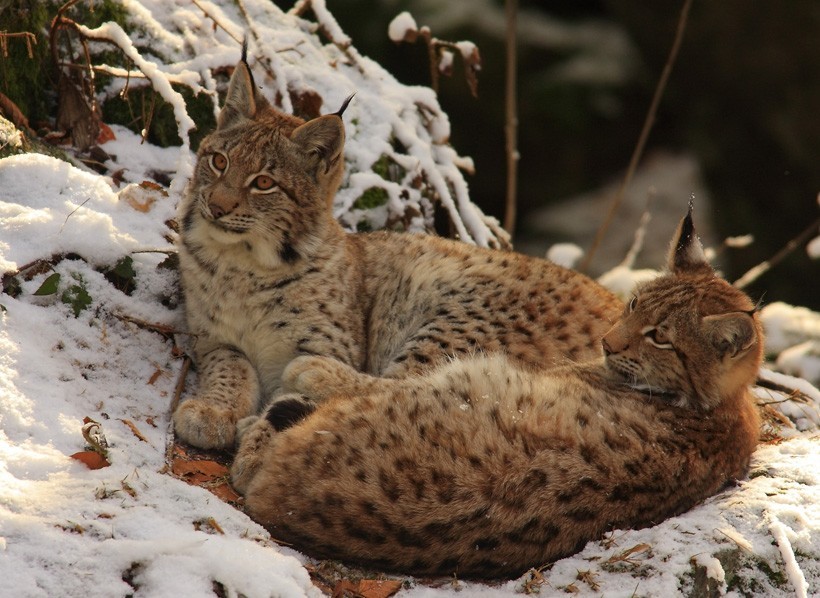
Eurasian Lynx in Bavarian National Park, South Germany
?
Image credits: Andreas R./Shutterstock
Deforestation, illegal hunting and game hunting are some of the major general threats faced by the Eurasian Lynx. Hunting of Eurasian Lynx is prohibited in all countries except Russia, which is home to over 90 % of the entire population. Though it is not a game species, the Eurasian Lynx often experiences a lack of prey in regions where game hunting is practiced on a large scale. The lack of prey provokes the predator to find other options, which often results in predation of livestock and thus in hatred amongst locals. The Eurasian Lynx is also hunted for the illegal fur trade but doesn't get hunted on large scale due to their elusive nature. In Asia, where rising population is a constant issue, Eurasian Lynxes experience a steady loss of habitat due to legal and illegal logging.
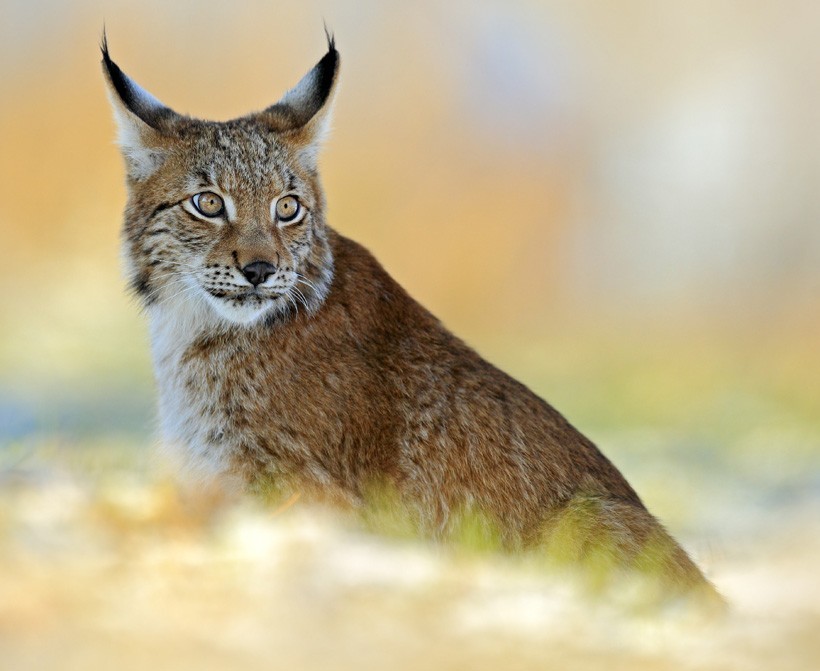
Eurasian Lynx on snow meadow in winter
?
Image credits: Ondrej Prosicky/Shutterstock
On the other hand, the species was reintroduced in several countries like France, Germany and Switzerland, where it has successfully survived. In a nutshell, it can be concluded that the species Eurasian Lynx is currently surviving despite the numerous threats they face.
Evolution
According to fossil records, it is believed that the genus Lynx evolved in Africa during the mid-Pliocene period. L. issiodorensis is the widely accepted earliest ancestral species of the genus Lynx. Approximately 2 million years ago, the species migrated to Asia and Europe. Compared to lynxes, L. issiodorensis had a larger head, shorter legs and more robust limb bones which resembled that of the modern puma. However, it had lynx-like teeth. The species gradually got smaller in size and evolved longer legs as an adaptation towards the forest habitat and gave rise to the species L. lynx in Asia and L. pardina in Europe.
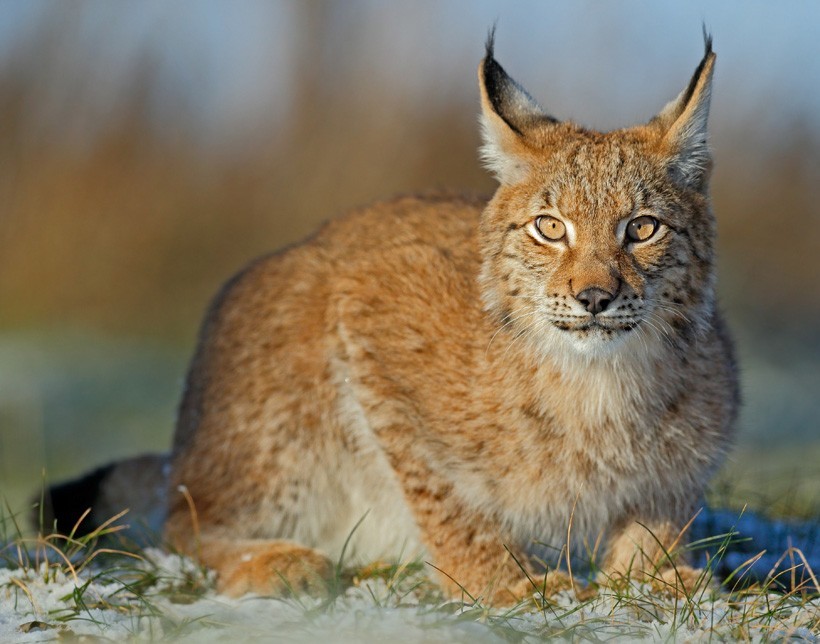
?
Image credits: Ondrej Prosicky/Shutterstock
Very little is known about the evolutionary history of lynxes. Though L. issiodorensis is considered the ancestor of all lynxes, several researchers debate this theory. It is also proposed that the ancestor of lynxes evolved in North America and later on moved to Asia and Europe. However, this theory is not yet accepted, as the ancestral species was quite larger than any of the lynxes and displayed very few lynx-like features. Research work and debates are still ongoing and hence, the theory of the evolution of lynxes may undergo dramatic changes in future.
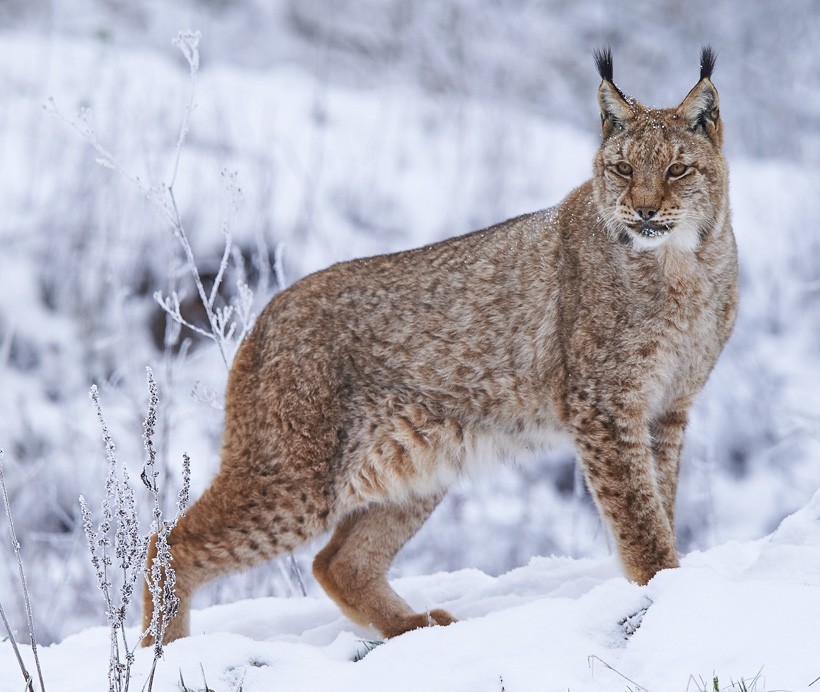
Eurasian Lynx in winter
?
Image credits: Michael Roeder/Shutterstock
Funfacts
- Eurasian Lynxes are the largest of all lynx species.
- They are found in large number across Europe and Asia.
- Russia is home for over 90 % of the entire Eurasian Lynx population.
- An Eurasian Lynx is capable of taking down prey four times larger than its size.
- They are also known for their ability to make high leaps.
- There are 6 recognized subspecies of Eurasian Lynx and 3 more have been proposed by scientists.
- Although listed as Least Concern on the IUCN Red List, the Eurasian Lynx is endangered in several countries like Croatia, Macedonia, Albania and Slovenia.
- Either L. issiodorensis or Issior Lynx is considered to be the ancestor of all Eurasian Lynxes. It evolved approximately 4 million years ago.
- Several Eurasian Lynxes are captivated and used as pets. However, an Eurasian Lynx pet can be highly dangerous for the owner because of its predatory instincts.
